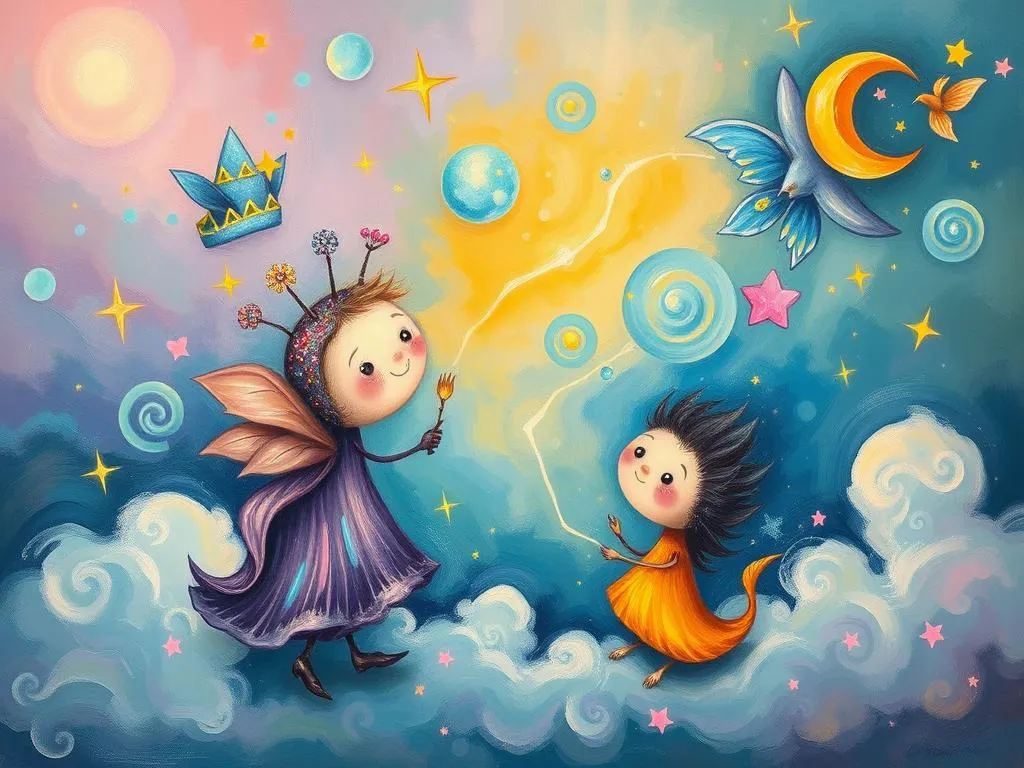
Have you ever woken up from a dream, heart racing, and wondered what on earth just happened? Dreams have fascinated humanity for centuries, bridging the realms of the conscious and the unconscious, the known and the mysterious. They serve as windows into our innermost thoughts, fears, and desires, often revealing hidden messages that can guide us in our waking lives. Whether you dream of flying high above the clouds or find yourself lost in a labyrinth, each dream carries its own symbolic weight and significance.
In this article, we’ll embark on a journey through the world of dream symbolism, exploring how various symbols manifest in our dreams and what they might mean for our personal growth. We’ll dive into cultural perspectives, psychological insights, and practical advice to help you unlock the secrets of your dreams. So, let’s get started on this fascinating exploration of the hidden meanings within your nighttime adventures!
Unraveling the Threads: The Language of Symbols
Dreams speak a language all their own, one that is often rich in symbolism and layered meanings. Understanding this language is key to interpreting the messages that our subconscious mind attempts to convey. Here, we’ll explore some common dream symbols and what they might signify in different contexts.
1. Water: Water in dreams can represent emotions, intuition, and the unconscious mind. Calm waters might indicate tranquility and emotional stability, while turbulent waters may symbolize anxiety or unresolved emotional conflicts. In many cultures, water is seen as a source of purification and renewal, reminding us to cleanse our emotional baggage.
2. Animals: Animals often embody aspects of our personality or instincts. For example, dreaming of a lion might signify courage and strength, while a snake could represent transformation or hidden fears. Cultural beliefs also play a role here; in some traditions, animals are viewed as spirit guides, offering wisdom on our life path.
3. Falling: The sensation of falling in a dream can evoke feelings of fear or insecurity. Psychologically, it may reflect a sense of loss of control or a fear of failure. However, in some cultures, falling is interpreted as a sign of impending growth and transformation, urging you to let go of old patterns to embrace new beginnings.
4. Houses: Houses in dreams often represent the self and various aspects of our identity. Different rooms may symbolize different facets of our personality or life experiences. For instance, an attic could represent forgotten memories or repressed emotions, while a basement might signify deep-seated fears or unresolved issues.
5. Death: Dreaming of death does not necessarily indicate literal death; rather, it often symbolizes transformation or change. In many cultures, death is viewed as a natural progression, heralding new beginnings. This symbol encourages you to embrace change rather than fear it.
By recognizing these symbols and understanding their meanings, you can begin to decode the messages your dreams are sending you.
Dreamscapes: Personal Encounters with the Unconscious
Every dream is a unique story, woven from the threads of our personal experiences, fears, and aspirations. Below are some common dream scenarios that many people encounter, along with insights into their potential meanings.
Scenario 1: The Exam You Didn’t Study For
Imagine this: you find yourself seated at a desk, staring down at a blank sheet of paper during an exam. The pressure mounts as time ticks away. This dream often reflects feelings of inadequacy or anxiety about performance in your waking life. It may signal that you’re facing a situation where you feel unprepared or fear judgment, urging you to confront these feelings and prepare for upcoming challenges.
Scenario 2: Being Chased
In this dream, you are running frantically, pursued by an unseen force. The chase often symbolizes avoidance or fear of confronting a particular issue or person in your life. The identity of the pursuer may provide additional clues about what you’re running from. This dream invites you to embrace your fears rather than evade them, as confronting them could lead to personal empowerment.
Scenario 3: Losing Teeth
You glance in the mirror and realize your teeth are crumbling or falling out. This dream can be deeply unsettling, often linked to feelings of insecurity or concerns about aging. In many cultures, losing teeth represents a fear of losing power or control. It beckons you to evaluate your self-image and the way you communicate with others, encouraging you to express yourself more authentically.
Scenario 4: Flying
Soaring through the sky can evoke feelings of freedom and exhilaration. Flying dreams often symbolize a desire for escape or a longing for greater control over your life. In psychological terms, they can represent a sense of empowerment, achievement, or even a release from burdens. This dream encourages you to pursue your passions and aspirations without fear.
Scenario 5: Being Naked in Public
You suddenly find yourself exposed and vulnerable in a public setting. This dream often reflects feelings of embarrassment or insecurity about how others perceive you. It can also signify a desire for authenticity and honesty. This dream invites you to explore your self-acceptance, urging you to embrace your true self without fear of judgment.
These scenarios illustrate how our dreams can serve as mirrors, reflecting our inner conflicts, desires, and challenges. By analyzing these experiences, we can start to glean insights into our waking lives.
The Journey Within: Embracing Personal Transformation
Understanding the symbolism in your dreams is just the beginning. The real work lies in using this knowledge to foster personal growth and transformation. Here are some practical strategies to help you harness the power of your dreams for self-improvement.
1. Keep a Dream Journal: Start documenting your dreams in a dedicated journal. Write down every detail you remember upon waking, including emotions and symbols. Over time, you may notice patterns or recurring themes that can provide deeper insights into your subconscious mind.
2. Reflect on Emotions: Pay attention to the emotions you feel in your dreams. Emotions often serve as a guiding compass, indicating areas of your life that may require attention. Ask yourself: What was I feeling during this dream? How does it relate to my waking life?
3. Engage in Active Imagination: Take a dream symbol that resonates with you and engage in active imagination. Visualize the symbol in your mind, then let your imagination guide you on a journey through that symbol. This exercise can help you tap into your inner wisdom and uncover hidden meanings.
4. Seek Cultural Context: Explore the cultural significance of symbols that appear in your dreams. Different cultures offer rich interpretations of dream symbols that can provide additional layers of understanding. Researching these perspectives can broaden your view and deepen your insights.
5. Set Intentions for Dream Work: Before going to sleep, set a clear intention for what you want to explore in your dreams. This could be a question you seek answers to or an area of your life you wish to understand better. Your subconscious may respond by guiding you through specific dream scenarios that provide clarity.
As you engage in these practices, remember that the journey of self-discovery is ongoing. Your dreams are not just fleeting images; they are gateways to understanding yourself on a deeper level.
In conclusion, exploring the hidden meanings within our dreams can be a transformative experience. By embracing the symbolism, reflecting on personal encounters, and utilizing the insights gained, we embark on a journey of self-discovery and growth. As you delve into the world of your dreams, remember this powerful reflection: Your dreams are not just stories; they are whispers from your soul, guiding you toward a more authentic and fulfilled life. So, the next time you wake up from a vivid dream, take a moment to listen—there’s wisdom waiting to be uncovered.







